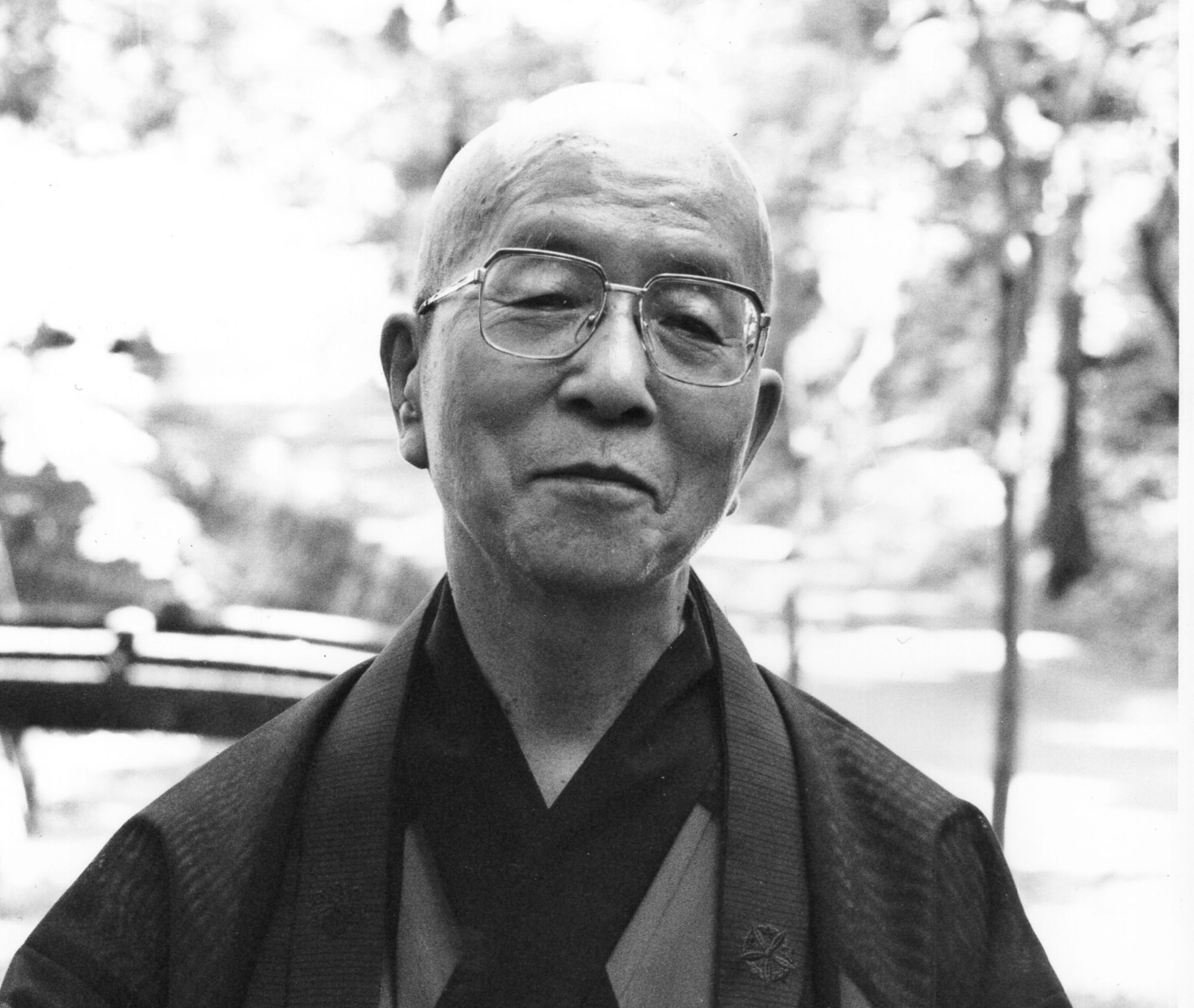Nishijima Roshi’s Zen Seminar in English – The Early Years
I first met Nishijima Roshi (or Sensei as we all called him) in October 1977, when he was 57 and I was a young 33. Having arrived in Tokyo to work as an engineer at NEC, I was looking for something to complete my life, but didn’t know what. One day I saw an ad in the Japan Times, the English language newspaper, for a “Zen Seminar in English” and immediately felt some interest. I had no idea that responding to this small ad, placed there every week by Harumi Saito, would have such a profound influence on my life.
Sensei had retired from the Ministry of Finance two years earlier and had started holding these weekly Saturday seminars at the Tokyo Young Men’s Buddhist Association (Todai Bussei) rooms in Hongo Sanchome soon after. Already he had attracted a number of Japanese students, one of whom, Mr Hideo Ida, was to be a significant support for his Buddhist work for many years to come. A few months earlier, Sensei had decided to hold a class for foreign people before his Japanese class. It consisted of an hour of zazen followed by an hour’s lecture in English. He already had three regular attendants, Stephen Cruise, Jeff Bailey and Larry Zacchi and I was to join them in sitting every week and listening to Sensei talk about the Shobogenzo in his simple English. In Sensei’s explanations of the supremacy of action I found something that resonated with my experience as a mountaineer and I continued to attend the Saturday seminars on a regular basis.
Sensei was tireless in his efforts to teach buddhism to the small collection of foreign students now attending the seminar. Although his English was somewhat rudimentary in some areas, he would repeat his explanations in many different ways until we could grasp what he was trying to convey. Mr Ida gave Sensei a position as priest-advisor to his cosmetics company, which meant that he had an office and a base from where he could continue with his work on the Shobogenzo. In addition to the version he was publishing in modern Japanese (Gendai Goyaku Shobogenzo), he was also working on an English translation. He explained to us that he thought it was very important to spread Dogen’s teachings to western countries, and that he found us foreigners were enthusiastic in practicing zazen, and in trying to understand what buddhism was about. He made us feel part of his mission to spread buddhism based on Dogen’s teachings to the world. We felt part of something very important for humanity.
Sensei never faltered in his commitment to his mission to spread Dogen’s teachings, and it seemed as if he attracted just the people he needed to further his dreams. He asked us if we would help him to edit his English translation of the Shobogenzo and for the next 5 years, we worked to complete this task. His translation was rather interpretive, which made it easier to understand. However, his English was fairly basic and his raw translations needed comprehensive editing. From early in 1978, Jeff, Larry and I worked on the translation, producing a readable English version that Sensei then used as the basis for his Saturday lectures. Over the next 5 years, I completed 36 chapters, which I am gradually making available for download on the Texts page of this website. Thanks to Andrew Deakin and members of Dogen Sangha UK for typing in and editing the chapters. In 1982, Mike Cross joined our group, radically changing our assessment of what was needed to make an understandable English translation of the Shobogenzo. This resulted in Sensei and Mike starting on the task of translating from scratch. The task was to continue for more than a decade, and resulted in the group publishing Master Dogen’s Shobogenzo in four volumes between 1990 and 1997. All four volumes are available to buy in paperback on Amazon, and digital versions are available for downoad here.
The Ida Ryogokudo Zazen Dojo
In the 1980s, Sensei told us that he intended to move to live in the US when he was 70, which would have been in 1989. In preparation for this, he had made connections with the department of religious studies at the University of Santa Barbara and had been involved in raising funds for a chair at the university. In 1987, he and I had attended the first “Buddhist-Christian Conference” in San Francisco (audio report here) and Sensei made many valuable contacts during the conference. As 1989 approached, Mr Hideo Ida, who had been Sensei’s first Japanese student, and who owned a cosmetics company in Tokyo, offered us the use of a dormitory building in Moto Yawata, a suburb of Tokyo, and agreed to fund its conversion into a Zen Centre for the group. As a result, Sensei decided that it would be better for him to put his energies into forming a centre for teaching rather than to start a new life in the US, with all the difficulties that would doubtless have involved. Together with the five students who had been helping him translate the Shobogenzo, Sensei decided to form a group that would be responsible for bringing this buddhist centre into being. We decided on the name Dogen Sangha, as we were a sangha founded on the teachings of Dogen Zenji, although Sensei did not feel completely happy with using Dogen’s name without the title ‘Zenji’. We shared out the work involved in planning the conversion of the dormitory into a place where people could stay and practice zazen and issued a booklet setting out our aims in establishing the centre. You can view the booklet here (originally in Japanese, translation by Reiko Pearson).
